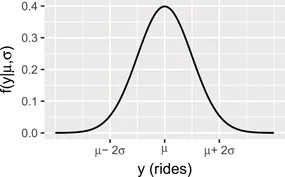
Bayes Rules!
An Introduction to Applied Bayesian Modeling
- 521 pages
- English
- ePUB (mobile friendly)
- Available on iOS & Android
About this book
An engaging, sophisticated, and fun introduction to the field of Bayesian statistics, Bayes Rules!: An Introduction to Applied Bayesian Modeling brings the power of modern Bayesian thinking, modeling, and computing to a broad audience. In particular, the book is an ideal resource for advanced undergraduate statistics students and practitioners with comparable experience. the book assumes that readers are familiar with the content covered in a typical undergraduate-level introductory statistics course. Readers will also, ideally, have some experience with undergraduate-level probability, calculus, and the R statistical software. Readers without this background will still be able to follow along so long as they
are eager to pick up these tools on the fly as all R code is provided.Bayes Rules! empowers readers to weave Bayesian approaches into their everyday practice. Discussions and applications are data driven. A natural progression from fundamental to multivariable, hierarchical models emphasizes a practical and generalizable model building process. The evaluation of these Bayesian models reflects the fact that a data analysis does not exist in a vacuum.
Features
• Utilizes data-driven examples and exercises.
• Emphasizes the iterative model building and evaluation process.
• Surveys an interconnected range of multivariable regression and classification models.
• Presents fundamental Markov chain Monte Carlo simulation.
• Integrates R code, including RStan modeling tools and the bayesrules package.
• Encourages readers to tap into their intuition and learn by doing.
• Provides a friendly and inclusive introduction to technical Bayesian concepts.
• Supports Bayesian applications with foundational Bayesian theory.
Frequently asked questions
- Essential is ideal for learners and professionals who enjoy exploring a wide range of subjects. Access the Essential Library with 800,000+ trusted titles and best-sellers across business, personal growth, and the humanities. Includes unlimited reading time and Standard Read Aloud voice.
- Complete: Perfect for advanced learners and researchers needing full, unrestricted access. Unlock 1.4M+ books across hundreds of subjects, including academic and specialized titles. The Complete Plan also includes advanced features like Premium Read Aloud and Research Assistant.
Please note we cannot support devices running on iOS 13 and Android 7 or earlier. Learn more about using the app.
Information
Unit IIIBayesian Regression & Classification
9 Simple Normal Regression
- Regression tasks are those that analyze and predict quantitative response variables (e.g., Y = hippocampal volume).
- Classification tasks are those that analyze categorical response variables with the goal of predicting or classifying the response category (e.g., classify Y, whether a news article is real or fake).

Table of contents
- Cover Page
- Half-Title Page
- Series Page
- Title Page
- Copyright Page
- Dedication Page
- Contents
- Foreword
- Preface
- About the Authors
- I Bayesian Foundations
- II Posterior Simulation & Analysis
- III Bayesian Regression & Classification
- IV Hierarchical Bayesian models
- Bibliography
- Index